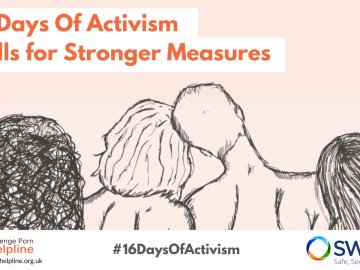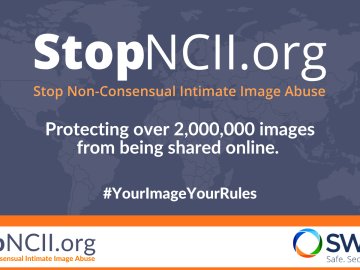As part of the global reflection on the 30th anniversary of the Beijing Declaration and Platform for Action, the United Nations Office on Drugs and Crime (UNODC) hosted a high-level event: Women, Justice and Security in a Changing World.
While the official programme addressed a wide range of global justice challenges, a quiet thread ran through the margins, a digital form of harm that leaves no bruises but shatters lives daily. Technology-facilitated gender-based violence (TFGBV), and particularly the non-consensual sharing of intimate images, emerged as one of the most urgent yet under-addressed issues of our time.
The Silence Around Digital Harm
In the chat, one participant asked: “How do we ensure justice for social media victims when the criminal can’t be tracked or identified?”
That one line captured the helplessness felt by thousands of women every day. Their images stolen, their privacy violated, their lives overturned, and yet no clear path to justice. We know this at SWGfL as we hear it through every call, every message, every silent pause.
At the centre of our work to address this is StopNCII.org, a free tool that allows individuals to stop the spread of intimate images shared without consent. It is survivor-led, privacy-conscious, and globally available tool. This platform doesn’t ask women to relive trauma or wait for platforms to act. It gives them something they often don’t get from justice systems: control.
TFGBV Is Not a Side Issue—It Is the New Frontline
Digital harm is not an “emerging” problem. It’s a present one. And it’s deeply gendered. TFGBV isn’t confined to social media, it’s playing out in schools, in domestic abuse contexts, in legal grey zones where laws lag behind the speed of violation.
At this UNODC event, organized crime, GBV, extremism, and terrorism were all discussed through a gendered lens, but the digital dimension plays a part in all of these issues. Technology is not neutral and if we don’t intervene, it will continue to reproduce the same patterns of violence and inequality.
Why We Brought StopNCII.org to This Conversation
We didn’t attend just to listen; we came to advocate. SWGfL brought StopNCII.org to the forefront of this international dialogue because we know survivors need more than awareness. They need tools. They need action. They need protection that meets them where they are: online.
As we continue collaborating with global partners, including UN bodies, we urge stakeholders to treat NCII not as a side concern, but as a core justice issue for women and girls in the digital age. 40 million women suffer from Intimate Image Abuse yearly, and we need start taking drastic action.
Justice Isn’t Just What Happens in Courtrooms
Justice must mean more than prosecution, it must mean prevention, recovery, and dignity. It must include community-based tools that respond at the speed of harm.
At SWGfL, our mission isn’t just awareness, it’s action. Through StopNCII.org, our Revenge Porn Helpline, and our wider partnerships, we are reshaping what protection looks like in a digital world. We are centring survivors, we are listening, designing, and delivering solutions.
Because justice isn’t theoretical, it’s lived. And right now, far too many are living without it. To the women who raised their voices during the UNODC event, you reminded us why we do this work. TFGBV is not the future of violence, it’s the present and we will not look away.






